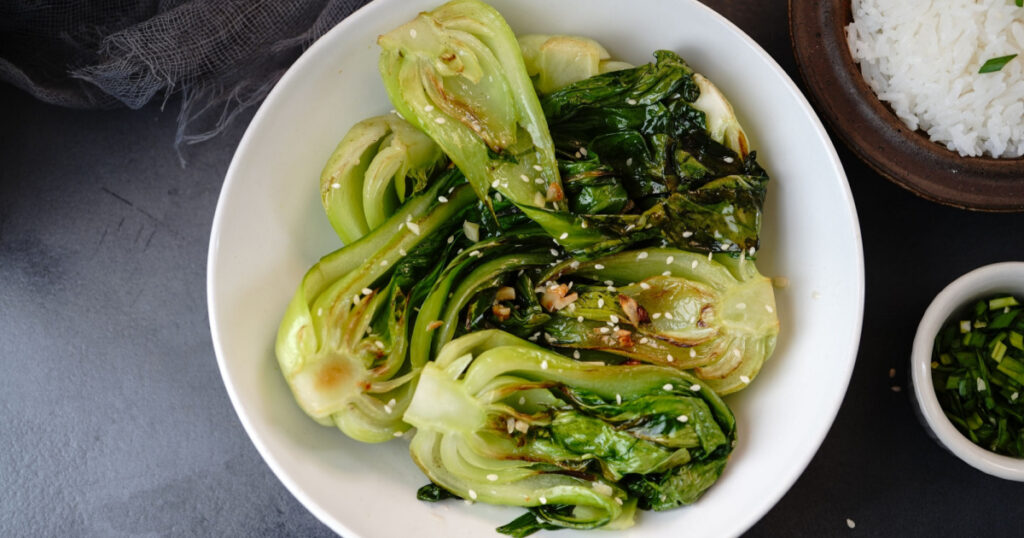When it comes to maintaining a healthy diet, it is important to focus on nourishing our bodies with nutrient-rich foods. Though this seems simple, it can get lost in today’s world of fad diets, “super” foods, and product marketing tactics. According to nutritionist Swrajit Sarkar, a senior lecturer in nutrition at the University of London, these are the foods you should actually eat more of.
8 Foods You Should Actually Eat More of: A Nutritionist Explains

As already stated, nutrition should be simple. Somehow, we’ve managed to make it very confusing, and it is hard to know who to listen to and what advice is real versus what someone is trying to convince you of something. Thankfully, nutritionist Swrajit Sarkar recently tried to help simplify it a bit in an article he wrote for The Conversation. According to him, these eight foods are ones that you should actually be focusing on eating more of. (1)
Read: 14 Fish You Could Consider Never Eating
1. Spinach

Spinach is a leafy green vegetable that packs a powerful nutritional punch. It is rich in vitamins A, C, and K, along with minerals such as iron and calcium. Spinach also contains important antioxidants that have been shown to reduce oxidative stress in the body. Additionally, it is high in dietary fiber, which aids in digestion and promotes satiety. (2)
2. Kale

Kale has gained popularity in recent years, and for good reason. It is one of the most nutrient-dense foods you can consume. Like spinach, kale is loaded with vitamins A, C, and K, as well as minerals like calcium and potassium. It is also a great source of fiber and contains powerful antioxidants known as carotenoids, which have been linked to numerous health benefits, including reduced risk of chronic diseases. (3) Though kale can be quite tough, resist the urge to steam or blanch it – you will lose out on valuable water-soluble nutrients. Instead, try “massaging” it, a.k .a. letting it sit in a dressing with an acid that will naturally break it down a bit. You can also try slicing it up and adding it to a stir-fry, where you will cook it in oil and not water. However, we need to remember that you can still get too much of a good thing – check out the link below!
Related: Is Kale a Superfood? Here’s why you can actually eat too much
3. Watercress

Watercress is a cruciferous vegetable that often flies under the radar. However, it has an impressive nutritional profile. It is packed with vitamins A, C, and K, and is an excellent source of calcium, iron, and folate. Watercress is also rich in antioxidants, including phenolic compounds, which have been associated with anti-inflammatory properties. (4)
4. Arugula

Arugula, also known as rocket, is a leafy green that adds a peppery flavor to salads and other dishes. Like other greens on this list, arugula is high in vitamins A, C, and K. It is also a good source of calcium, iron, and potassium. Arugula contains beneficial compounds called glucosinolates, which have been studied for their potential cancer-fighting properties. Add some arugula into your salads, or try it as a fresh pizza topping (adding it after the pizza comes out of the oven). (5)
Read: A Healthy Diet Can Save You Money at the Checkout, Research Finds
5. Bok Choy

Bok choy, a type of Chinese cabbage, is a staple in Asian cuisine. It is low in calories but rich in nutrients. Bok choy is an excellent source of vitamins A, C, and K, as well as minerals like calcium and potassium. It also contains compounds called glucosinolates, which have been found to have anti-cancer effects. This vegetable is a stir-fry superstar. (6)
6. Romaine Lettuce

Romaine lettuce is a crisp and refreshing salad green that is often overshadowed by other varieties. However, it has its own set of nutritional benefits. Romaine lettuce is a great source of vitamins A, C, and K, providing minerals such as calcium and potassium. Additionally, it is high in water content, making it hydrating and a good choice for those looking to increase their daily water intake. (7)
7. Collard Greens

Collard greens are a leafy green vegetables that deserve more recognition for their nutritional value. They are rich in vitamins A, C, and K, as well as minerals like calcium and potassium. Collard greens are also a good source of dietary fiber, which aids in digestion and helps promote a healthy gut. (8)
8. Swiss Chard

Swiss chard is a vibrant and colorful leafy green that is often overlooked in the grocery store. It is packed with vitamins A, C, and K, and provides essential minerals such as magnesium and potassium. Swiss chard is also a great source of antioxidants, including flavonoids, which have been shown to have anti-inflammatory and cardiovascular benefits. (9)
The Bottom Line

By incorporating these eight foods into your diet, you can boost your intake of essential vitamins, minerals, and antioxidants. Not only will they provide numerous health benefits, but they also add variety and flavor to your meals. So, why not give these underappreciated foods a chance and start reaping their nutritional rewards today?
Keep Reading: Woman makes it her mission to teach people how to make healthy food from Dollar Tree ingredients
Sources
- “Eight super-healthy leafy greens – and why you should eat them.” The Conversation. Dr Swrajit Sarkar. November 13, 2023.
- “Top 10 health benefits of spinach.” BBC Good Food. Jo Williams. October 18, 2023.
- “Kale: Discover the ‘secret powers’ of this superfood.” Mayo Clinic. Caitlin Terpstra, RDN, LD. March 17, 2023.
- “Health Benefits of Watercress.” Health. Lauren Manaker MS, RDN, LD. August 21, 2023.
- “What You Should Know About Arugula.” Healthline. Corey Whelan. July 3, 2023.
- “The health benefits of bok choy.” Medical News Today. Megan Ware, RDN, L.D. November 9, 2023
- “Does Romaine Lettuce Have Any Nutritional Benefits?” Healthline. Corey Whelan . August 19, 2019.
- “Why you should eat your collard greens.” Medical News Today. Megan Ware, RDN, L.D. March 30, 2023.
- “Food of the Month: Swiss Chard.” Denver Health Medical Plan

